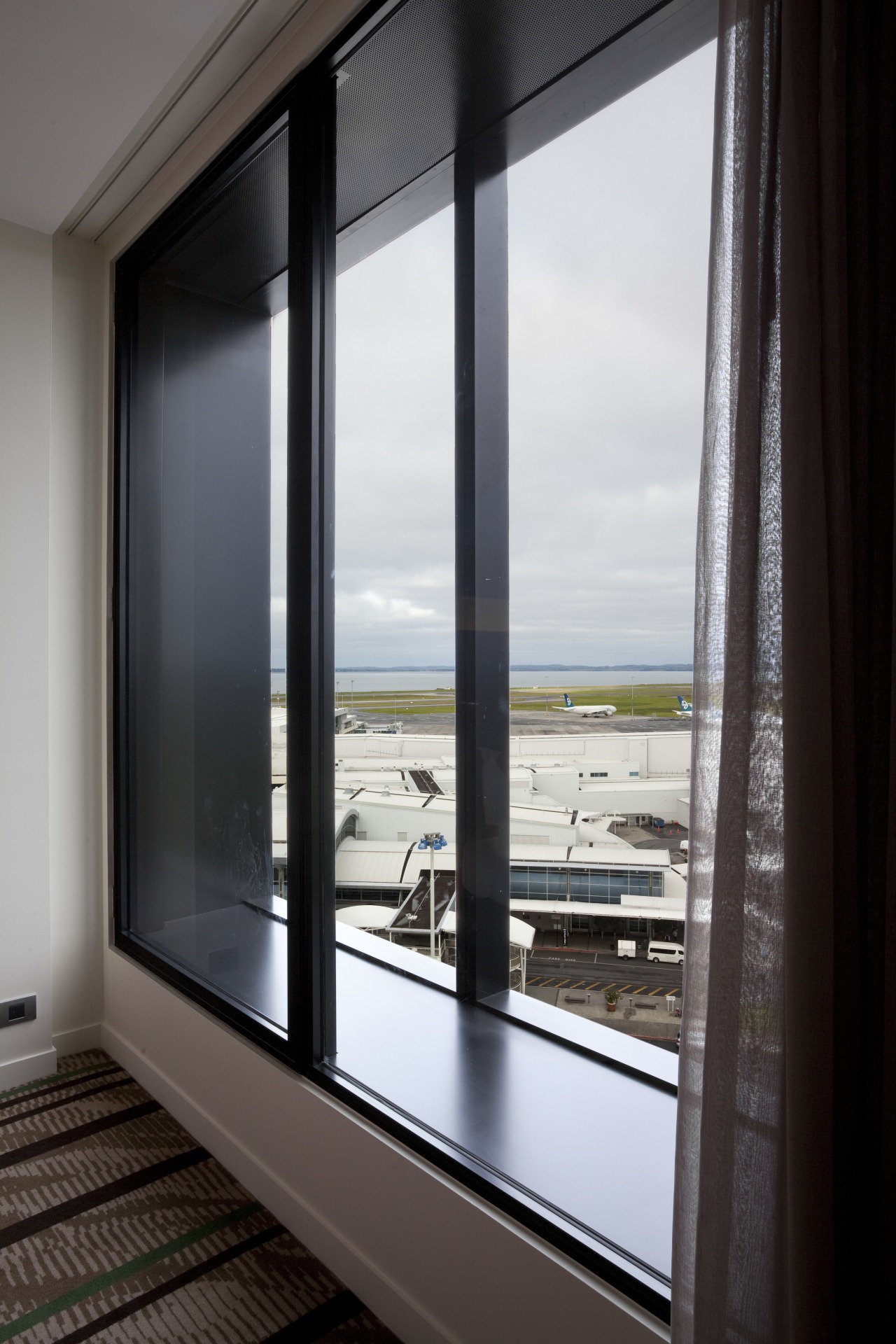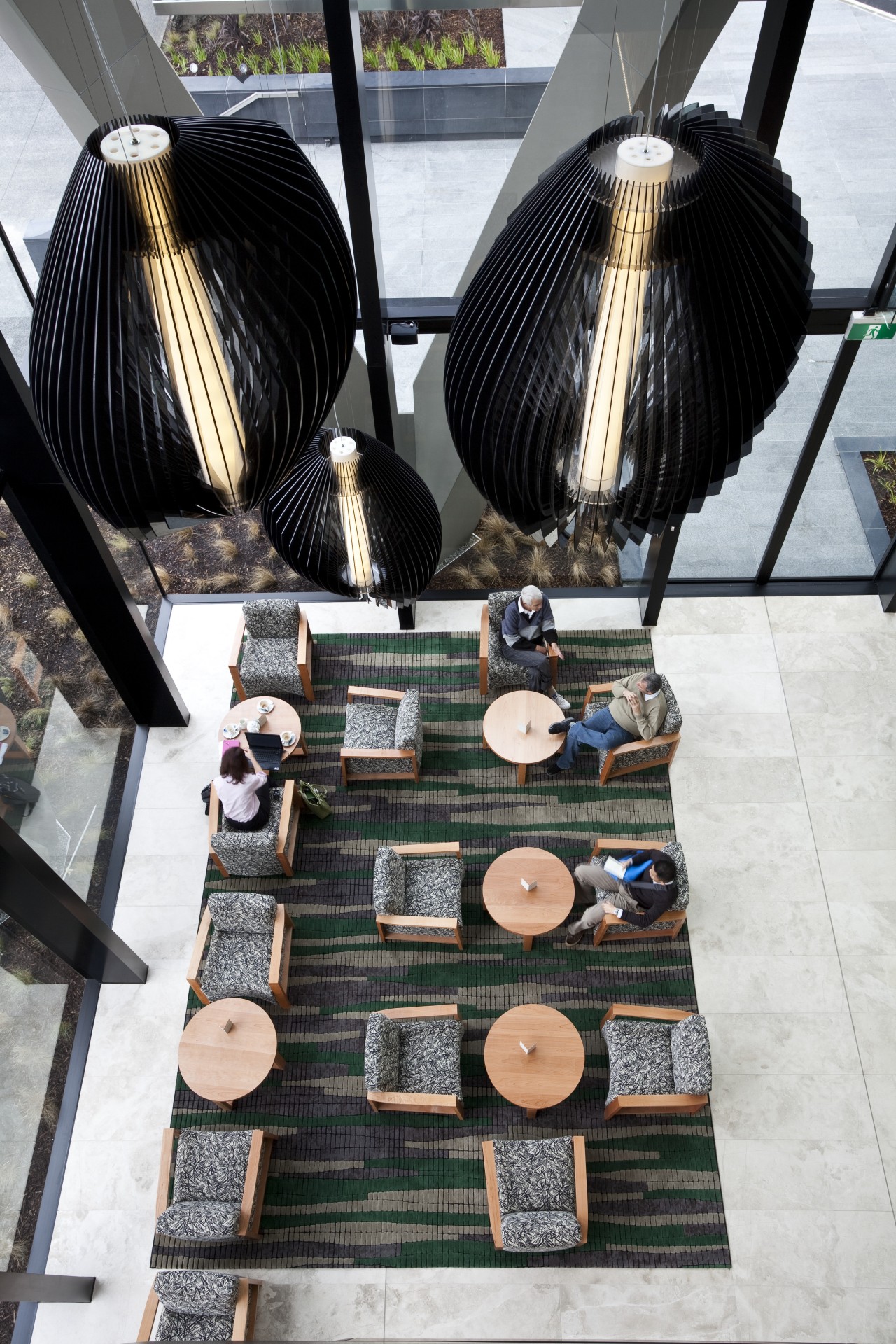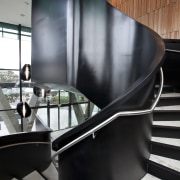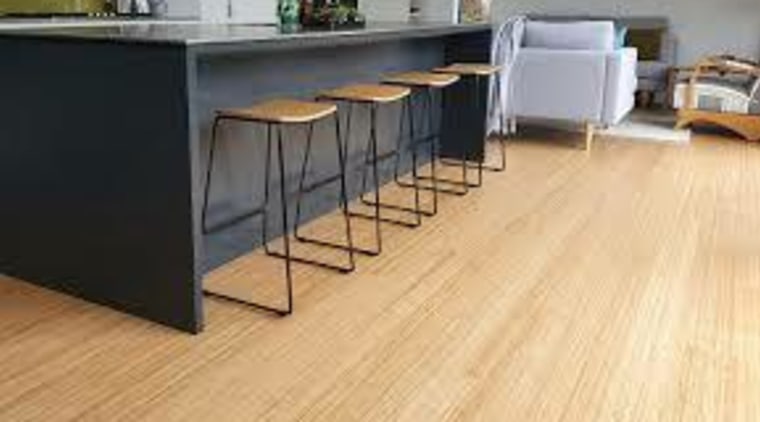Point of departure Novotel Auckland airport hotel designed by Warren and Mahoney
Novotel Auckland airport hotel designed by Warren and Mahoney

Airport hotels may be commonplace in many cities around the world, but the concept is a first for Auckland Airport. And while the idea of a hotel beside the terminal is not original, the team behind the new Novotel Auckland Airport decided very early on the hotel would set a new benchmark.
The joint venture between Tainui Group Holdings, one of New Zealand's largest Maori commercial entities, Auckland Airport and hotel operator Accor is an acknowledgement of the huge growth in projected visitor numbers. At present, the airport handles more than 13 million passengers annually, and this is expected to grow to 24 million by 2025, with more than 70% of all international visitors to New Zealand arriving or departing from Auckland.
Mike Pohio, Tainui Group Holdings CEO and chairman of the joint venture, says the hotel will be the first and last impression many visitors have of the country, so the design needed to be infused with subtle references to New Zealand's natural environment, culture, art and heritage. It needed to reflect the fact that the area is of great cultural significance for the Waikato-Tainui people. Tainui were among the first waves of Polynesian migration, arriving via the Manukau Harbour, and landing and settling in the area where the airport now operates.
Architect Jonathan Hewlett of Warren and Mahoney, the company that won the commission to design the hotel, says the project provided a unique opportunity to showcase New Zealand to a global audience.
"We could see this was a chance for visitors to engage directly with New Zealand's culture, its people and landscape," he says. "For many travellers, it would provide their first insight into the essential qualities of New Zealand the character and essence of this country. We wanted the hotel to be a memorable part of their journey as both a first experience and a last encounter."
Hewlett says the height of the 263-room hotel, which has 12 levels, was determined by airport constraints, including flight paths. The hotel also needed to fit in contextually with its surroundings.
"We modelled the mass of the building to reflect the scale of the airport terminal, which is just 50m away. And by creating a new pedestrian plaza between the hotel and the airport, we were able to make a significant contribution to the terminal concourse the statue of Jean Batten has been given new prominence within the plaza."

To maximise views of the harbour, runway and surrounding countryside, the top nine levels of the hotel are given over to the suites. The front-of-house amenities, including the reception area, bar, dining, meeting and conference rooms, occupy the lower levels, and are articulated on the exterior by a series of large V columns. The V column framing the main entry features traditional Maori carving from a Tainui master carver.
"Right from the outset, we wanted to ensure the structure of the hotel was infused with the culture and indigenous design elements as an integral part of the architecture, not just images placed on top," says Hewlett. "The V columns and the distinctive diamond-shaped concrete panels on the elevations at either end are the largest gesture. These were modelled on tukutuku panels in the meeting house on the marae near the airport. They also reference another Maori saying about the Waikato River at every bend, another great chief'. Like a bend in the river, the points where the V columns meet mark a change in direction and are actual points of strength in the building, making the analogy with Maori chiefs even more appropriate."
At the entry, a fritted glass canopy is embossed with a traditional taniwha pattern of triangular pyramid shapes that reference Maori genealogy. Hewlett says this motif is particularly meaningful to Tainui and is consistently repeated, on a varying scale, throughout the hotel.
"The pattern can be seen in its purest form in the glass canopy, where it casts a play of shadows over people entering the hotel. A larger scale of the pattern is expressed along the ridge line of the ceiling in the public spaces at ground level. Here, the undulating panels are reminiscent of the wake of a waka or Maori canoe. And in the conference room, the same triangular pattern features on wood wall panels. Another series of wood panels behind the reception and bar area was inspired by Maori feather cloaks."
All the wood panelling and the custom designed and manufactured wood furniture throughout the hotel was sourced from sustainable Southland maple beech forests, managed by Lindsay and Dixon.
"Sustainability influenced the choice of all the materials," says the architect. "Wherever possible, products were manufactured in New Zealand."
The reception area includes a living wall of native plants a vertical garden designed to reflect New Zealand's natural landscape.

Guest suites were designed by Australian interior designer David Forbes to fit with Accor's new Next concept rooms. Designed to provide a sense of space and freedom of movement, the bathroom is separated from the rest of the room by a transparent glass partition that can be covered by an internal privacy screen. Accor says this marks a significant shift from the design of traditional hotel rooms. New Zealand-themed furnishings ensure these room interiors are unique to the Novotel Auckland Airport.
Not surprisingly, the hotel was designed to meet very stringent noise level guidelines. Malcolm Dunn of Marshall Day Acoustics says Accor wanted a high-quality, quiet environment for guests, who would likely include flight crews needing to sleep.
"The hotel is so close to the runway, noise was potentially a huge problem. Before work started, we installed a noise logger on the roof of the airport terminal for a week. This determined the exact noise levels that would be hitting the building."
Marshall Day's acoustic solution involved a double-glazed facade with an extra-large 600mm air cavity and thick laminated glass panes. In addition, there are perforated aluminium panel sections between the glass panes at the top of the guest room windows. These conceal a sound absorption material.
"The glass on the outside is larger in area than the panes on the inside, which gives a nice visual effect on the exterior," says Dunn. "And by using a glazing system with high acoustic performance, we have been able to meet the strict internal criteria without compromising on the size of the windows. They are large enough to maximise the views and the natural light coming into the rooms."
Noise is also minimised by extra sound insulation between rooms, and a quiet air conditioning system.
Credit list
Developer
Interior design public spaces
Project manager
Mechanical and electrical engineer
Surveying
Acoustics consultant
Concrete detailing
Bar and kitchen design and fit-out
Entry matting
Metalwork
Interior painting; decorating
Architect
Construction company
Structural engineer
Quantity surveyor
Fire consultant
Structural steelwork
Plaster coating
Composite steel floor decks
Carpets
Living wall
Stonework
Timber panelling
Story by: Colleen Hawkes
Home kitchen bathroom commercial design















